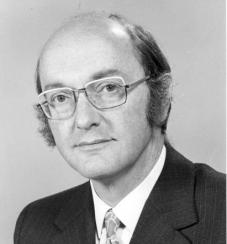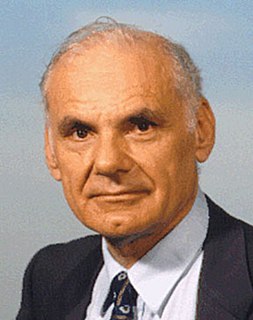Related Research Articles

Client–server model is a distributed application structure that partitions tasks or workloads between the providers of a resource or service, called servers, and service requesters, called clients. Often clients and servers communicate over a computer network on separate hardware, but both client and server may reside in the same system. A server host runs one or more server programs, which share their resources with clients. A client usually does not share any of its resources, but it requests content or service from a server. Clients, therefore, initiate communication sessions with servers, which await incoming requests. Examples of computer applications that use the client–server model are email, network printing, and the World Wide Web.

The history of the Internet has its origin in the efforts to build and interconnect computer networks that arose from research and development in the United States and involved international collaboration, particularly with researchers in the United Kingdom and France.
Internetworking is the practice of interconnecting multiple computer networks, such that any pair of hosts in the connected networks can exchange messages irrespective of their hardware-level networking technology. The resulting system of interconnected networks are called an internetwork, or simply an internet.
The Internet protocol suite is the conceptual model and set of communications protocols used in the Internet and similar computer networks. It is commonly known as TCP/IP because the foundational protocols in the suite are the Transmission Control Protocol (TCP) and the Internet Protocol (IP). During its development, versions of it were known as the Department of Defense (DoD) model because the development of the networking method was funded by the United States Department of Defense through DARPA. Its implementation is a protocol stack.

In telecommunications, packet switching is a method of grouping data that is transmitted over a digital network into packets. Packets are made of a header and a payload. Data in the header is used by networking hardware to direct the packet to its destination, where the payload is extracted and used by application software. Packet switching is the primary basis for data communications in computer networks worldwide.
Link-state routing protocols are one of the two main classes of routing protocols used in packet switching networks for computer communications, the other being distance-vector routing protocols. Examples of link-state routing protocols include Open Shortest Path First (OSPF) and Intermediate System to Intermediate System (IS-IS).
The end-to-end principle is a design framework in computer networking. In networks designed according to this principle, application-specific features reside in the communicating end nodes of the network, rather than in intermediary nodes, such as gateways and routers, that exist to establish the network.
Raytheon BBN Technologies was an American research and development company, based next to Fresh Pond in Cambridge, Massachusetts, United States.

The Advanced Research Projects Agency Network (ARPANET) was the first wide-area packet-switching network with distributed control and one of the first networks to implement the TCP/IP protocol suite. Both technologies became the technical foundation of the Internet. The ARPANET was established by the Advanced Research Projects Agency (ARPA) of the United States Department of Defense.

Leonard Kleinrock is an American computer scientist. A professor at UCLA's Henry Samueli School of Engineering and Applied Science, he made several important contributions to the field of computer science, in particular to the theoretical foundations of data communication in computer networking. He played an influential role in the development of the ARPANET, the precursor to the Internet, at UCLA.

Donald Watts Davies, was a Welsh computer scientist who was employed at the UK National Physical Laboratory (NPL).
The CYCLADES computer network was a French research network created in the early 1970s. It was one of the pioneering networks experimenting with the concept of packet switching and, unlike the ARPANET, was explicitly designed to facilitate internetworking.
The Interface Message Processor (IMP) was the packet switching node used to interconnect participant networks to the ARPANET from the late 1960s to 1989. It was the first generation of gateways, which are known today as routers. An IMP was a ruggedized Honeywell DDP-516 minicomputer with special-purpose interfaces and software. In later years the IMPs were made from the non-ruggedized Honeywell 316 which could handle two-thirds of the communication traffic at approximately one-half the cost. An IMP requires the connection to a host computer via a special bit-serial interface, defined in BBN Report 1822. The IMP software and the ARPA network communications protocol running on the IMPs was discussed in RFC 1, the first of a series of standardization documents published by the Internet Engineering Task Force (IETF).

Lawrence Gilman Roberts was an American engineer who received the Draper Prize in 2001 "for the development of the Internet", and the Principe de Asturias Award in 2002.
Peter Thomas Kirstein was a British computer scientist who played a role in the creation of the Internet. He put the first computer on the ARPANET outside of the US and was instrumental in defining and implementing TCP/IP alongside Vint Cerf and Bob Kahn. He is "often recognized as the father of the European Internet".

A computer network is a group of computers that use a set of common communication protocols over digital interconnections for the purpose of sharing resources located on or provided by the network nodes. The interconnections between nodes are formed from a broad spectrum of telecommunication network technologies, based on physically wired, optical, and wireless radio-frequency methods that may be arranged in a variety of network topologies.
A communication protocol is a system of rules that allows two or more entities of a communications system to transmit information via any kind of variation of a physical quantity. The protocol defines the rules, syntax, semantics and synchronization of communication and possible error recovery methods. Protocols may be implemented by hardware, software, or a combination of both.

The NPL network or NPL Data Communications Network was a local area computer network operated by a team from the National Physical Laboratory in London that pioneered the concept of packet switching.
A long-running debate in computer science known as the Protocol Wars occurred from the 1970s to the 1990s when engineers, organizations and nations became polarized over the issue of which communication protocol would result in the best and most robust computer networks. This culminated in the Internet–OSI Standards War in the late 1980s and early 1990s.
References
- 1 2 3 John McQuillan, Ira Richer and Eric C. Rosen (1980). "The New Routing Algorithm for the ARPANET" (PDF). IEEE Transactions on Communications. COM-28 (5): 711–19. doi:10.1109/TCOM.1980.1094721. S2CID 18169185. Archived from the original (PDF) on 2019-05-17.
- ↑ John McQuillan (2009). David Walden (ed.). "The Birth of Link-State Routing". IEEE Annals of the History of Computing. 31: 68–71. doi:10.1109/MAHC.2009.17. S2CID 2385847.
- 1 2 John M. McQuillan at the Mathematics Genealogy Project
- ↑ Janet Abbate (1999). Inventing the Internet (PDF). MIT Press.
- ↑ Matthew Lyon and Katie Hafner (1996). Where Wizards Stay Up Late: The Origins Of The Internet. Simon & Schuster, Inc. New York, NY, USA. ISBN 0-684-83267-4.
- ↑ "John McQuillan author page". IEEE online journals.
- ↑ "John McQuillan Joins IVP As Venture Partner; Pioneer in Advanced Networks Adds Strength in Internet, High Performance Networking and Bandwidth to the Home as Areas of Investment Opportunities." Business Wire, 30 July 1996, p. 7300063. Business Collection, http://link.galegroup.com/apps/doc/A18540586/GPS?u=tplmain&sid=GPS&xid=9618e020 . Accessed 30 May 2019.
- ↑ "John McQuillan, 85, Engineer Ora". The New York Times. The Associated Press. 1984-07-10. ISSN 0362-4331 . Retrieved 2019-05-30.